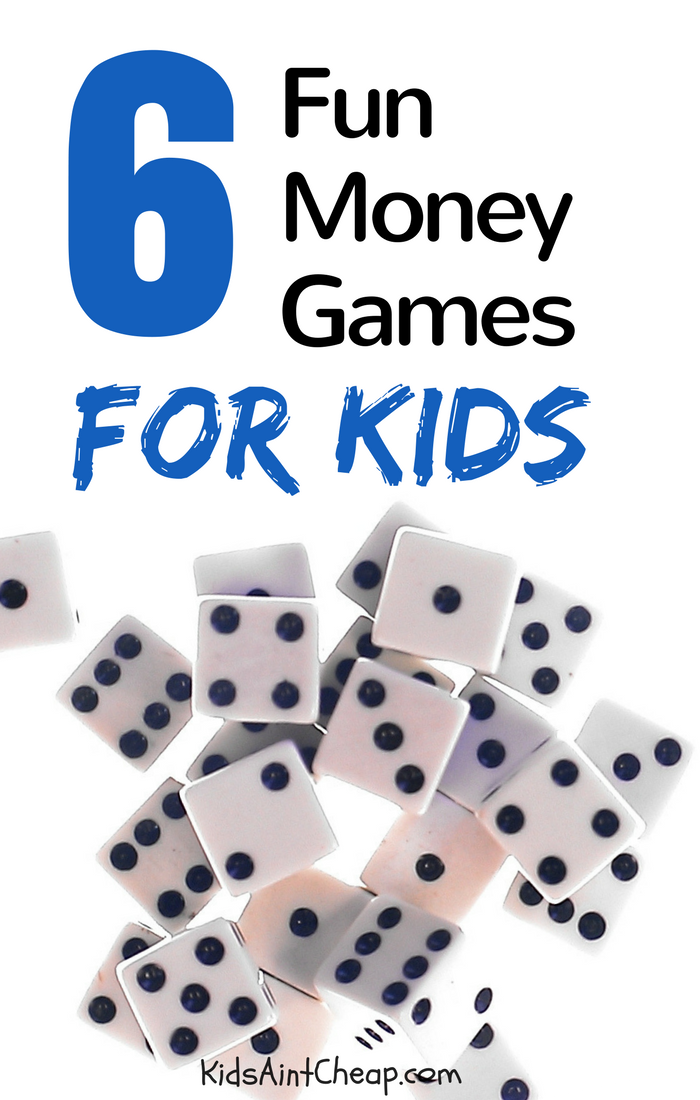
Unfortunately, financial education isn’t required in all public schools. So your kids may not learn the money lessons they need to know in the classroom. Luckily there are books about financial literacy for kids to fill in the gaps and teach your children about budgeting and investing. To set your kids up for financial success, check out the 10 best money books for children of all ages below.
10 Best Books About Financial Literacy for Kids
1. Investing for Kids: How to Save, Invest, and Grow Money

This finance book for preteens covers investing concepts such as compound interest, risk, and diversification in an entertaining way. The humorous writing style and cartoon illustrations help keep young minds engaged. There are also interactive games, discussion questions, and exercises you can complete with your child to ensure these important money lessons stick. The authors even provide side hustle and investing ideas that kids can pursue to start building their wealth early.
Overall, Investing for Kids receives 4.7 stars from happy customers. One glowing review says the book is “great for kids and adults alike,” because it’s easy to read, interesting, and informative. You can grab your copy here.
2. Finance 101 for Kids: Money Lessons Children Cannot Afford to Miss

Finance 101 proves that financial literacy for kids doesn’t have to be boring. The book contains funny illustrations, impactful quotes, and real-world examples that will capture your child’s attention. Instead of focusing on one topic like investing, Finance 101 discusses a wide range of financial concepts, including credit scores, debt, international currencies, basic economics, and charitable donations.
Amazon reviewers give the book an average of 4.7 stars. A satisfied customer says the book is a “fantastic resource.” It uses “relatable examples, clear explanations, and practical tips” to explain important topics like budgeting and saving. The book even helped spark family discussions about financial goal-setting! Click here to pick up a copy of Finance 101 for your household.
3. Evan-Moor Financial Literacy Lessons and Activities

Evan-Moor publishes activity books that focus on financial literacy for kids. There are several editions for students in different grade levels, including middle school, first grade, and third grade. Each book contains real-world lessons, vocabulary lists, games, and math exercises. Your kids will learn valuable skills like how to do taxes, balance a budget, tally up a shopping cart, and more.
These workbooks all receive 4.6 to 4.8 stars on Amazon. One happy parent says the book “gives realistic lessons that kids need to know, such as having a bank account, paying rent, getting a loan, etc.” Grab a copy of the fifth-grade version here, or one of the other editions above!
4. Humble Math – Money and Financial Literacy

Need a book about financial literacy for kids 12 and up? Check out Humble Math, which provides 100 days of money management lessons for teens. Topics covered include responsible spending, business basics, simple and compound interest, and sales and discounts. Plus, the book dives into various types of loans, such as mortgages and term loans. This will help your child understand student debt before they head off to college.
Customers give Humble Math a solid 4.5 stars. One reviewer says, “This is my favorite math workbook from the Humble series! I really like how it teaches consumer math and personal finance concepts.” Snag a copy for a teen in your life here.
5. What Is Money? Little Economists

Did you know that kids start grasping basic money concepts between the ages of 3 and 4? For that reason, it’s never too early to start educating your children about finances. This book by Kelly Lee is the perfect introduction to financial literacy for kids ages 3 to 6. It’s a storybook that follows a bunny named Charlie as he learns where money comes from and why he should save it. Charlie has multiple piggy banks for different goals, demonstrating the importance of financial planning to kids.
This adorable picture book has a 4.4-star rating on Amazon. After reading it, one child was “excited to spend money on a toy, share money with an animal shelter so they can buy dog and cat food, and save money.” We call that a success! Grab your own copy here.
6. Robot Finny’s Big Money Adventure

Robot Finny’s Big Money Adventure is an illustrated storybook suitable for ages 8 to 12. This fun financial tale teaches older kids the value of money and the importance of making wise financial decisions. It also encourages kids to reach for the stars, set big-money goals, and give back to their community.
Reviewers give Robot Finny a whopping 5 stars. A mom called the book a “game-changer.” It helped her child “not only grasp the concepts of saving, budgeting, and responsible spending but also apply them to earn her first dollars.” Check out what all the hype is about!
7. Think Like a Boss Kids Edition: 47 Money Making Ideas for Young Entrepreneurs

Financial literacy for kids isn’t just about saving money—they also need to learn how to earn it. Think Like a Boss Kids Edition will turn your child into a budding entrepreneur by giving them over 47 fleshed-out business ideas. The book also explains the key ingredients of success, provides business advice, and offers tons of encouragement. Your child will feel like they can achieve anything after reading it!
Think Like a Boss currently has a 4.4-star rating on Amazon. A happy customer called it a “shining five-star beacon of inspiration and practical guidance.” So you won’t regret adding it to your cart!
8. Kyng & Kyren’s Generational Wealth Building Activity Book
Father-son team Kyren and Kyng created this activity book to teach kids about building generational wealth. This age-appropriate resource introduces kids to financial independence and fiscal responsibility in a digestible way. By completing fun mazes, crossword puzzles, coloring sheets, and mini-lessons, your child will learn how to leave a financial legacy.
Kyng & Kyren’s workbook has a rating of 4.9 stars, making it one of the top titles about financial literacy for kids. One reader says the book is a must-have because it’s “easy for my son to understand and the activities are fun to do.” Check it out here.
9. Financial Literacy Series by Money Mentor Publications

This series of financial literacy books will grow with your kids, teaching them everything they need to know to be self-sufficient adults. Over the course of three books, your children will learn about financial scams, college costs, budgeting on a tight income, taxes, and more.
The books have an average rating of 4.9 stars and receive top marks from parents. A satisfied reader says the series provides the “life skills needed for adulthood,” in a format that’s easy to read and entertaining.
10. 108 Financial Literacy Flashcards

If your child has trouble reading full-length books, these flashcards may be more accessible. This deck will introduce your child to important financial vocabularies like equity and dividends. Each card has a text definition and a picture right beside it, making complex financial terms easier to understand. This deck of cards has a 4.6-star rating on Amazon and is a “great tool to teach your children about financial literacy.” You can grab your set here.
What are your favorite financial literacy books for kids? Share your recommendations in the comments!

Vicky Monroe is a freelance personal finance writer who enjoys learning about and discussing the psychology of money. In her free time, she loves to cook and tackle DIY projects.
